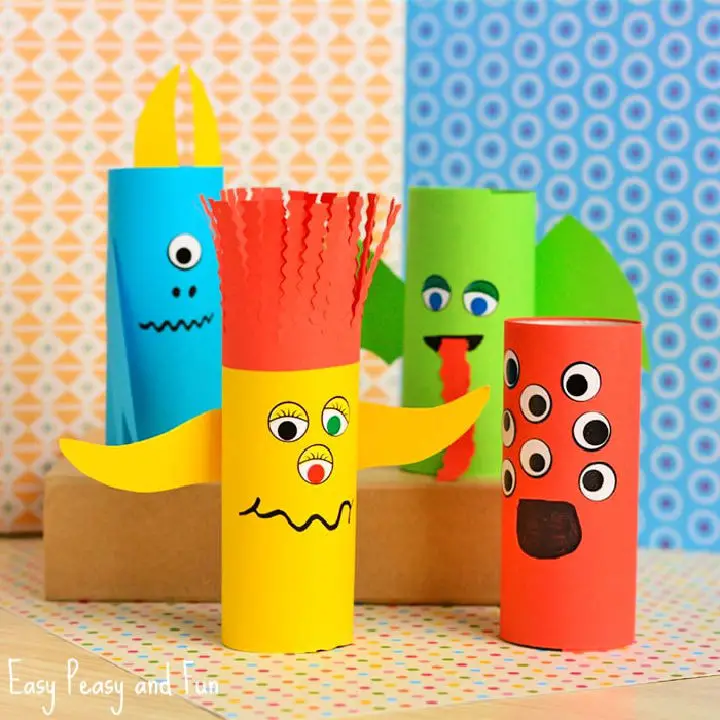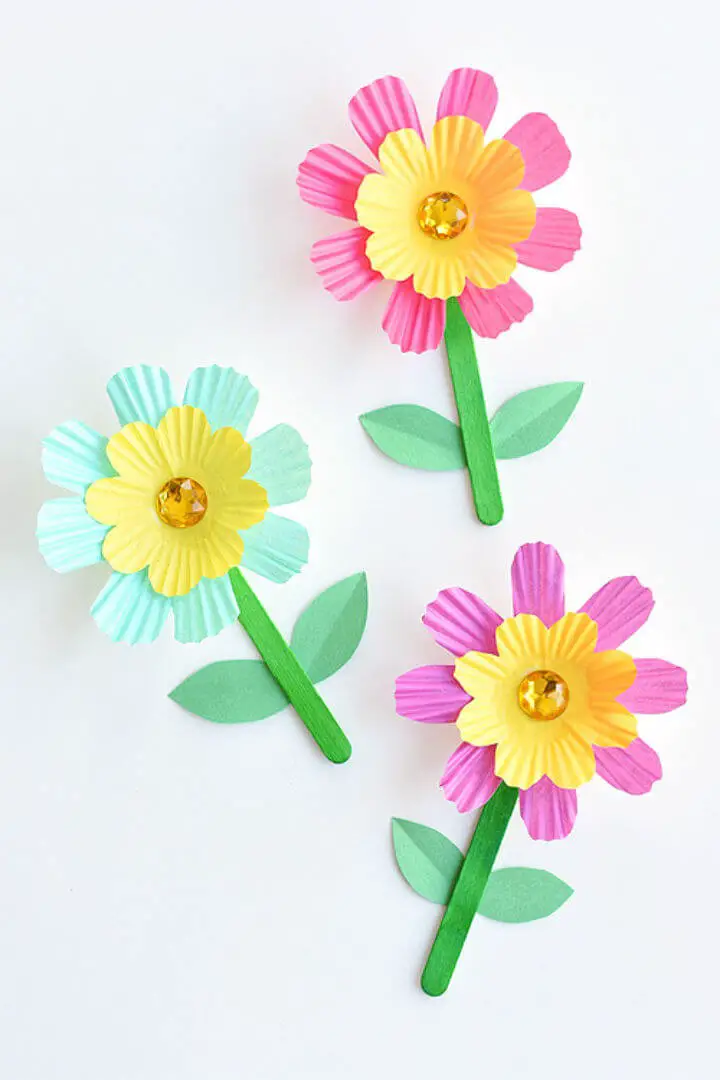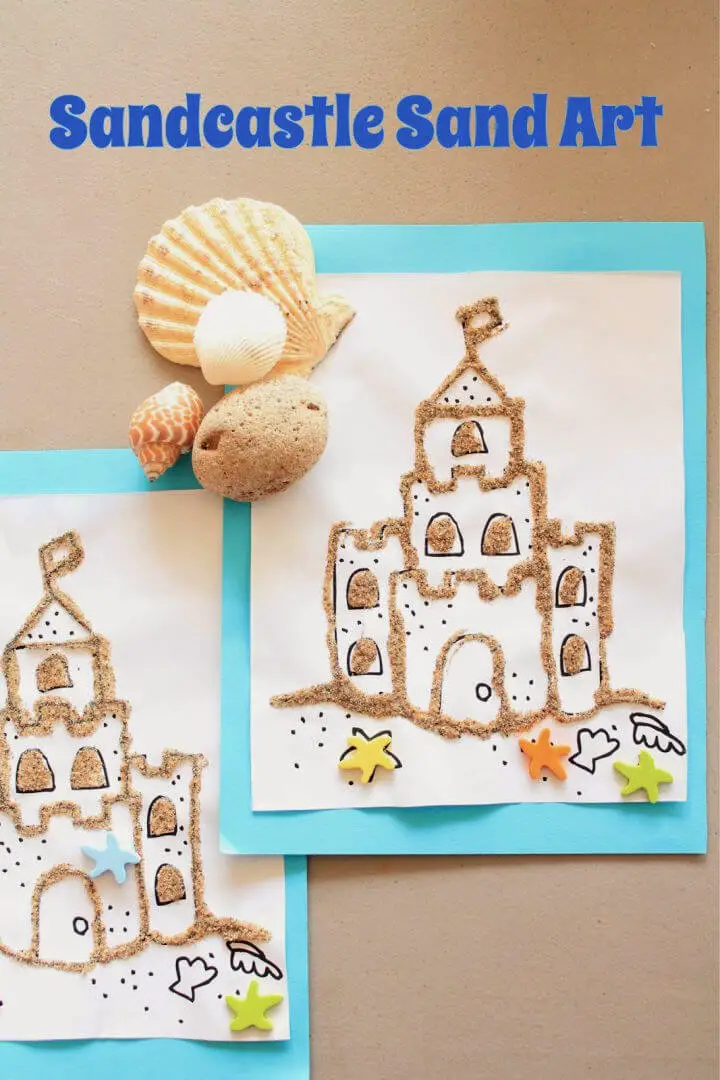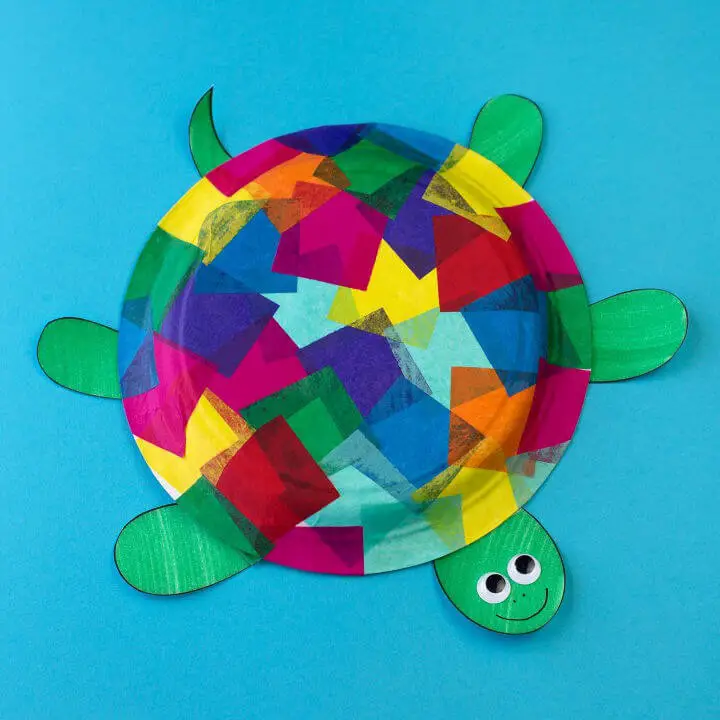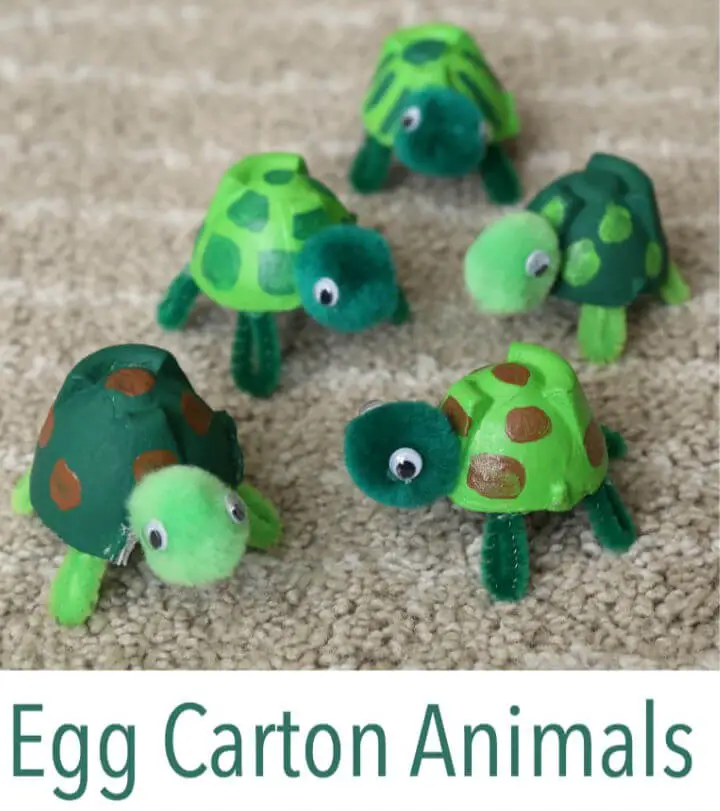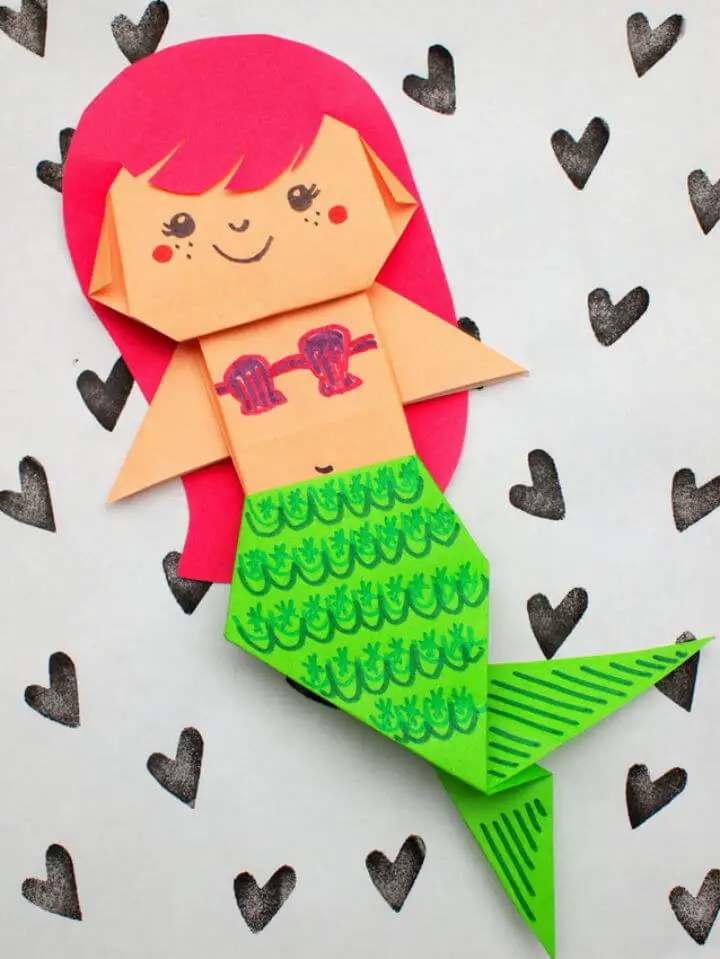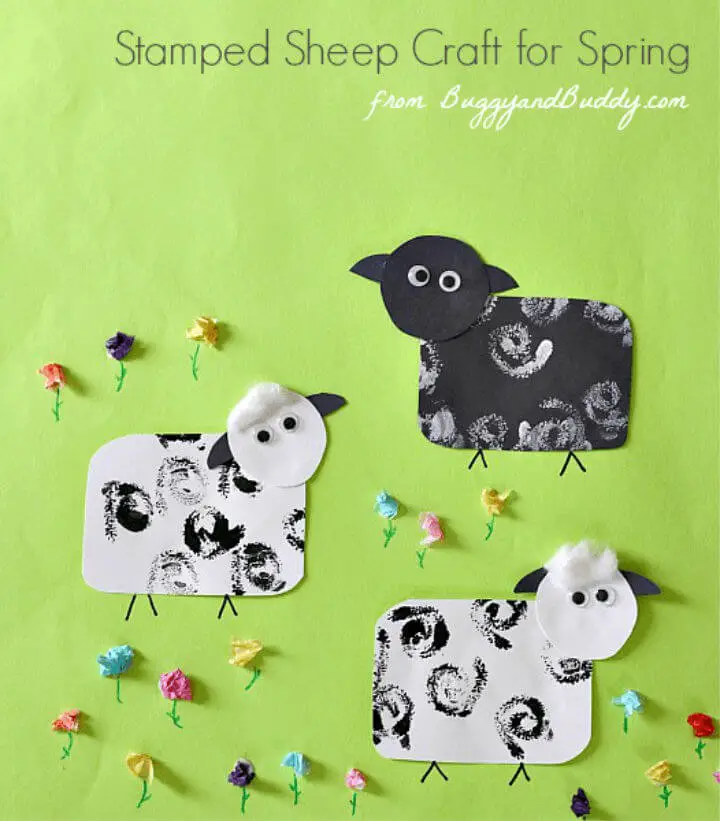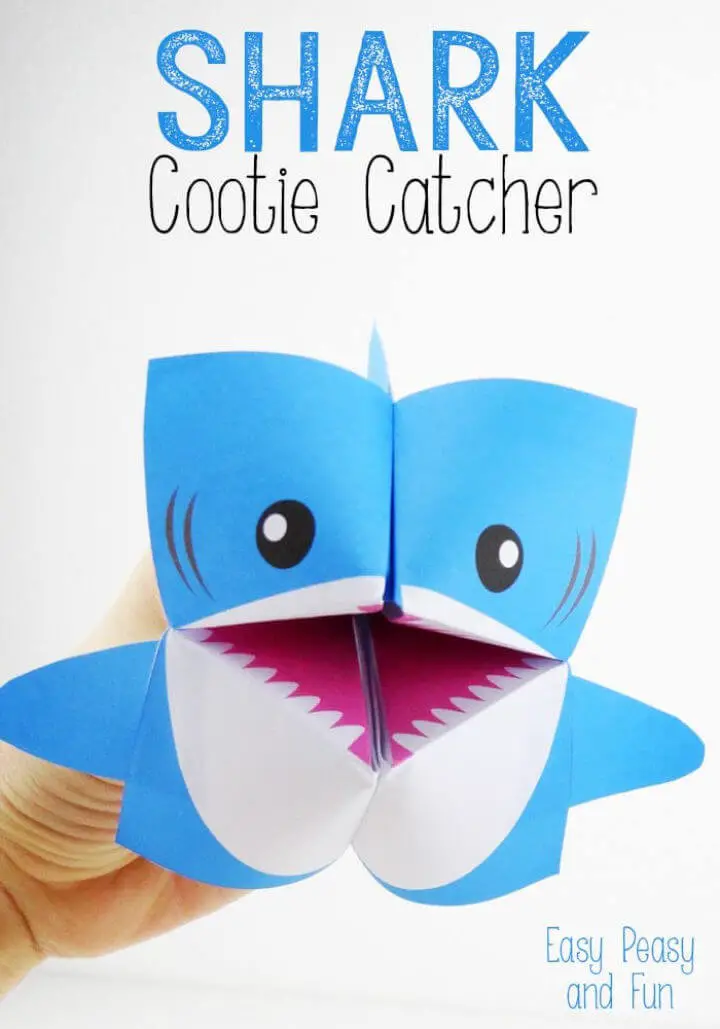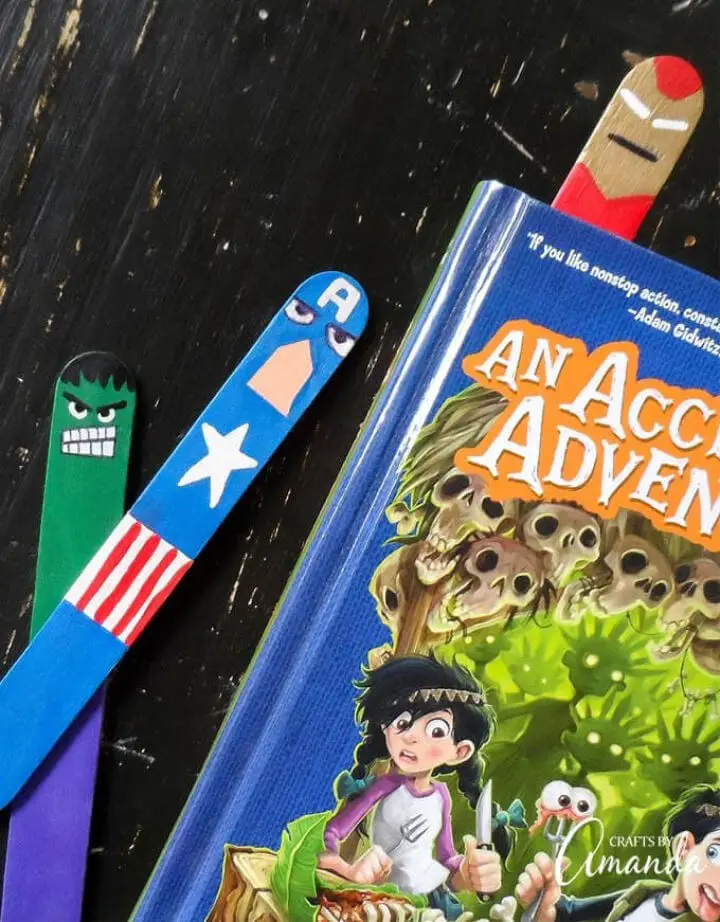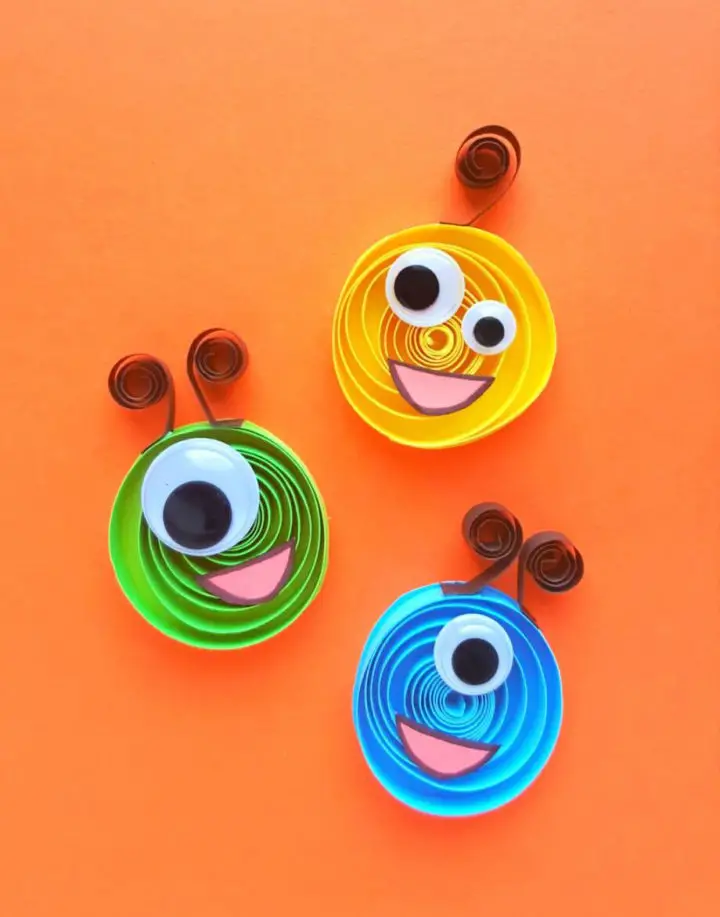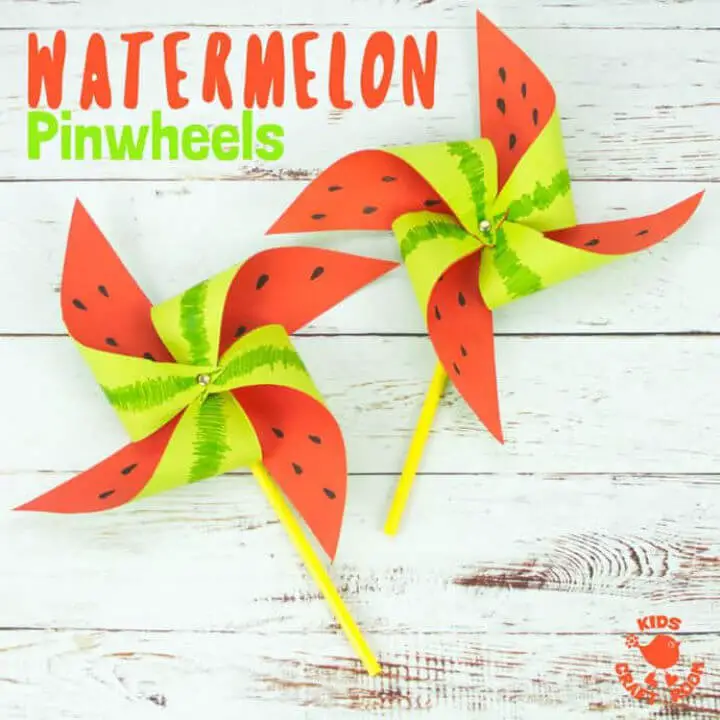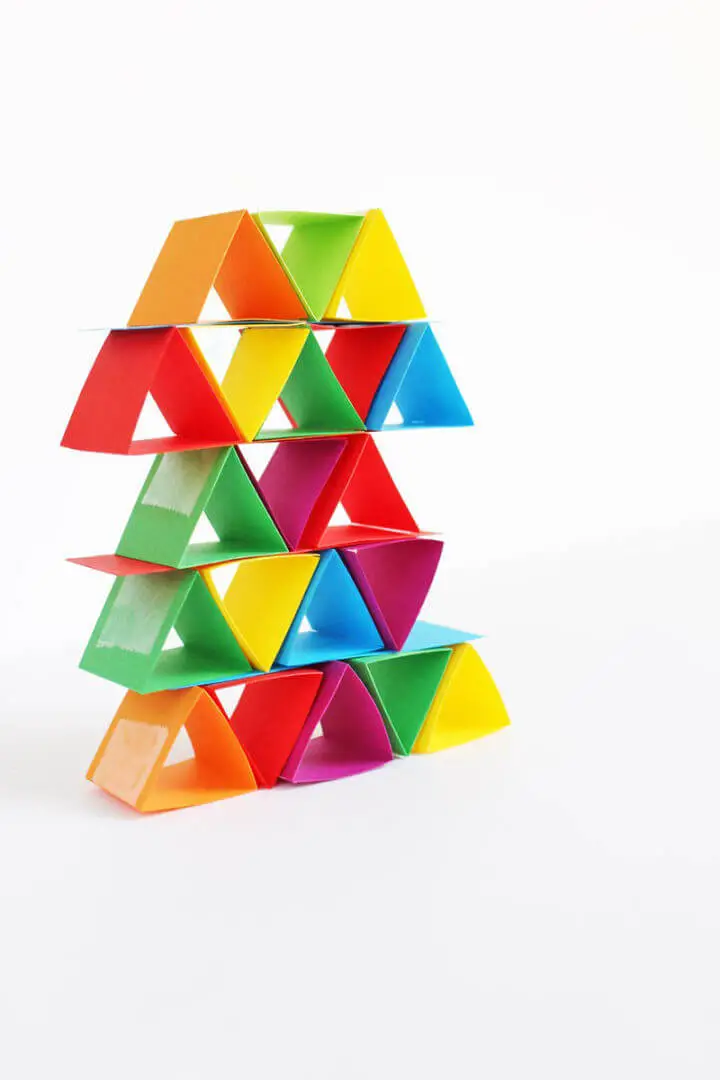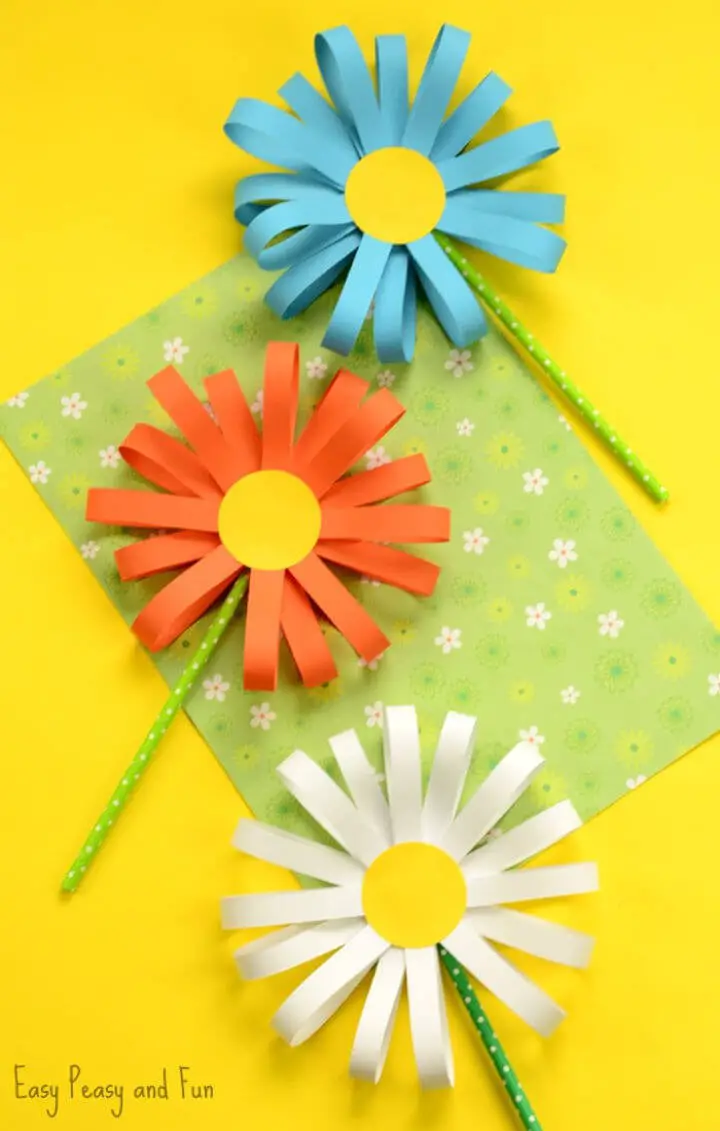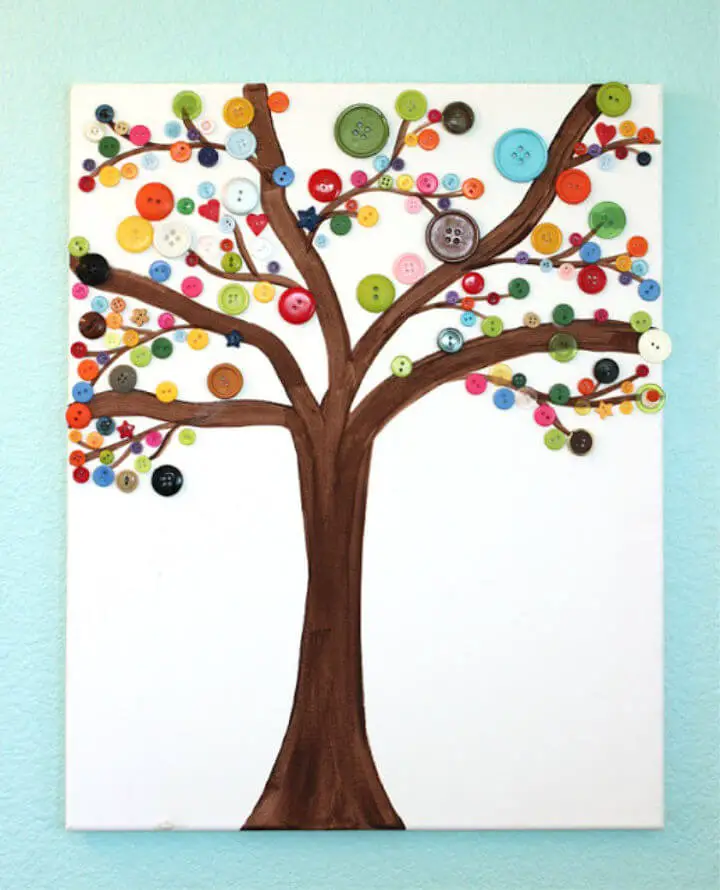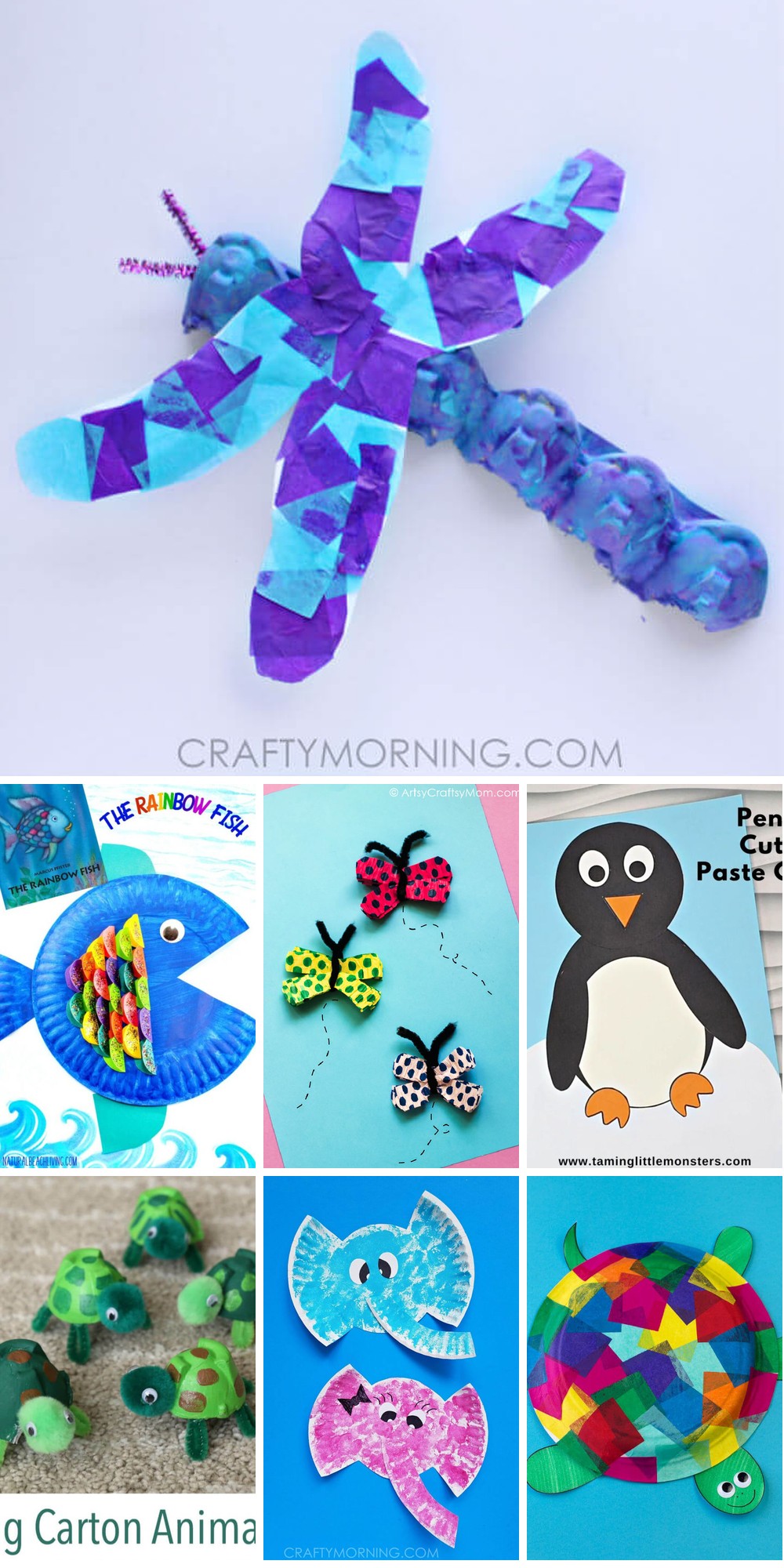
Igniting creativity and fostering learning in kindergarteners is as simple as offering them engaging and easy-to-follow crafting experiences. With 30 fun and educational projects, young learners are introduced to the joys of creating something with their own hands, while exploring cultural crafts that broaden their worldview, and challenging art and craft activities that spark imagination. The process of making, learning, and sharing experiences is just as important as the end result, allowing children to develop essential skills like fine motor control, problem-solving, and critical thinking. This guide provides practical tips on creating a safe crafting environment, selecting the right projects for diverse needs, and turning every crafting session into a valuable learning experience. By including ideas specifically designed for children with special needs, this comprehensive resource ensures that every child can find joy in the creative process, making crafts an integral part of kindergarten learning and development.
Cultural Crafts for Kindergarten
Introducing cultural crafts to young learners is an effective way to foster inclusivity, global awareness, and creativity. By exploring various cultures through craft activities, kindergarten students can gain hands-on experience and develop a deeper understanding of the diverse world we live in. Here’s how you can incorporate cultural crafts into your curriculum:Start by selecting a range of cultures to explore, such as African tribal art, Native American dwellings, or Japanese celebrations. Use these as inspiration for craft activities that allow children to engage with each culture on a tactile level. For example, make paper plate masks to learn about African tribal art or create paper teepees to understand Native American dwellings.In addition to exploring individual cultures, you can also encourage children to celebrate diversity by making art that reflects different cultural backgrounds. This could include creating Japanese windsocks, Mexican papel picado, or Greek mosaics. Each craft activity can serve as a conversation starter about the country’s traditions and celebrations.Folk art is another great way to introduce children to the artistic expressions of various cultures. Activities like Russian matryoshka doll coloring, Indian rangoli with colored rice, or Aboriginal dot painting can be adapted for young children. These crafts help kids appreciate the beauty and uniqueness of different cultural art forms.You can also have children create simple representations of traditional clothing from around the world. They can make paper kimonos, felt berets, or even paper leis. This activity not only sparks creativity but also teaches about the different types of clothing worn in various countries.To further enrich the crafting experience, pair each craft activity with a story or fact about the culture it represents. For instance, while making Chinese dragon masks, you can share legends about the Chinese New Year. This adds an educational element to the crafting process and helps children remember what they’ve learned.Finally, consider incorporating crafts related to global celebrations such as Diwali, Eid, Hanukkah, and Christmas. Children can make lanterns for Diwali, crescent moon decorations for Eid, dreidels for Hanukkah, and ornaments for Christmas. This teaches children about the different ways people celebrate and the significance behind these festivals.By incorporating cultural crafts into your kindergarten curriculum, you can promote inclusivity, global awareness, and creativity in a fun and engaging way.
Creative Craft Techniques for Kindergarten
Imagination is a powerful tool in kindergarten classrooms, where creativity and fine motor skills can be honed through engaging arts activities. With the right approaches, crafting with young children becomes an invaluable way to foster learning, exploration, and self-expression. Here are some innovative techniques that can bring kindergarten crafts to life:Weaving intricate patterns and textures is a great way to introduce kids to fundamental concepts like symmetry and pattern recognition. Start with simple materials like colorful yarn or ribbons and a cardboard loom, allowing children to create basic weaves before experimenting with adding beads or feathers.Using the humble toilet paper roll as a canvas, circle-print art is an entertaining and educational activity that can help youngsters understand patterns and symmetry. This technique also encourages kids to think critically about shapes and colors.Paper tube sculptures take this creative process to the next level by challenging children to consider three-dimensional forms and stability. As they construct their unique creations, kids develop problem-solving skills and learn to balance form and function.The humble paper snail may seem like a simple craft project, but it’s actually an excellent way to practice cutting and rolling skills while introducing basic concepts about animal habitats. Kids can use these templates to create adorable snails that showcase their artistic abilities.Fingerprint art is often overlooked as a sophisticated technique for exploring color mixing and seasonal changes. By using fingerprints to create leaves, blossoms, or autumn foliage on tree templates, children develop an understanding of the natural world while honing their fine motor skills.Beyond the traditional hand turkey, hand tracing can be used to create a wide range of animals like cats, giraffes, and dinosaurs. This technique helps kids learn about different animal features and how to creatively represent them.Reinforcing alphabet learning is easy when combining art with literacy through folded paper squares decorated with colors or patterns. Kids can then paint or trace alphabet letters over the top, solidifying their understanding of the written word.Old cardboard boxes become mini galleries for self-portrait shadow boxes, where kids can feature a photo of themselves and decorate the transparency in front with markers. This activity encourages self-reflection and creative expression.
How to Get Started with Kindergarten Crafts
Engaging in crafting activities with kindergarteners offers a trifecta of benefits: fostering creativity, refining fine motor skills, and stimulating cognitive development. For those new to this endeavor or seeking ways to elevate the experience for their young learners, the following guidance provides a straightforward path to get started. As you embark on this journey, keep in mind that the ultimate goal is to craft an enjoyable and educational experience that delights both you and the children.
Choose the Right Projects
When it comes to engaging kids in creative activities, it’s essential to start with projects that align with their interests and skill levels. Simple crafts that don’t demand intricate details are perfect for sparking creativity without overwhelming the children. Consider activities like creating paper roll monsters, crafting cupcake liner flowers, or making paper handprint giraffes. These projects offer a great balance between being fun and accessible, allowing kids to build confidence and develop their artistic skills.
Gather Your Materials
To get started with crafting for kindergarteners, it’s essential to have all the necessary materials within reach. While many crafts utilize common household items, some may require supplies from your local craft store. A list of essentials includes construction paper, safety scissors, glue, and a variety of markers. Additionally, having decorations like stickers or glitter on hand can add an extra layer of creativity. To make the setup process even smoother, consider keeping a designated craft box stocked and easily accessible.
Make a Safe Crafting Environment
When it comes to crafting with young children, safety should always be your top priority. To minimize risks, make sure all the materials you’re using are non-toxic and suitable for their age group. Keep any sharp objects or fragile items out of reach to prevent accidents from occurring. Additionally, supervise the use of scissors, glue, or other tools that could potentially cause harm. Crafting in a spacious and well-organized area also helps to reduce the likelihood of accidents happening and makes cleanup a breeze.
Embrace the Mess
While messiness is an inevitable aspect of crafting, it’s all part of the creative process. To minimize any potential damage, consider laying down a protective layer such as newspapers or a tablecloth. For added convenience, opt for washable paints and markers that can be easily cleaned up if needed. Another effective strategy is to encourage children to wear aprons or old clothes during craft time, allowing them to get messy without worrying about ruining their regular attire.
Encourage Creativity and Independence
Fostering a sense of autonomy is crucial when guiding young children’s creative pursuits. Rather than dictating every step of the process, provide guidance and support as needed, while still allowing them to take ownership of their ideas and decisions. This approach not only encourages independence but also helps build confidence in their abilities, laying the groundwork for future creativity and innovation.
Make It a Learning Experience
Weave learning experiences into your creative pursuits by exploring educational elements in crafting. This can be achieved by examining colors, shapes, and textures. Additionally, connect crafts to narratives, historical events, or the natural world. One such example is creating a paper plate turtle, which offers a chance to delve into the diverse species of turtles and their environments, sparking curiosity and a deeper understanding of these fascinating creatures.
Have Fun
When embarking on a crafting adventure with kindergarteners, it’s crucial to prioritize enjoyment. The ultimate goal is to create lasting memories and foster a lifelong love for creativity. Should a project not unfold as expected, seize the opportunity to laugh and cherish the experience – after all, the process and joy it brings are far more valuable than the final product. By embracing this mindset, you’ll set the stage for a fun and enriching crafting experience that sparks imagination and ignites passion in young minds.
Crafts for Children with Special Needs
Crafting can be a powerful tool for promoting inclusivity and engagement among children with special needs. By tapping into various senses and motor skills, crafting experiences can foster creativity, self-expression, and social interaction. Here’s how: Sensory-rich activities like manipulating playdough or slime stimulate the senses, promoting exploration and calmness. For instance, creating worry stones or texture balloons offers a tactile experience that’s both calming and engaging.Fine motor skills can be developed through crafts that require threading, cutting, or sticking. Simple projects like making bracelets or keychains with large beads or buttons improve hand-eye coordination and build confidence.Visual aids like behavior charts or chore charts help children understand routines and expectations, teaching responsibility and organization. Crafting these visual aids is a fun way to reinforce important skills.Adaptive tools like easy-grip scissors or stampers make crafting more accessible for children who struggle with standard tools, reducing frustration and increasing independence.Storytelling through crafts combines imagination and cognitive skills, allowing children to retell stories in their own words. This activity enhances creativity and self-expression.Crafts that involve movement, such as making a simple puppet or windsock, encourage physical activity and coordination while resulting in a fun product.Inclusive group projects, like creating a large mural or collective collage, foster cooperation and community among children with special needs. By working together on a shared project, they appreciate each other’s contributions and develop essential social skills.By incorporating these ideas into your approach, you can create an environment that supports the unique needs and abilities of children with special needs.
Safety Tips and Best Practices for Kindergarten Crafts
To ensure a safe and enjoyable crafting experience for kindergarten children, it’s crucial to prioritize safety from the start. Here are some essential guidelines to follow:Firstly, preparation is key. Before diving into any craft project, thoroughly review the instructions and ensure you have all necessary materials and tools within reach to avoid leaving children unattended.When setting up your crafting space, consider a clutter-free and organized area that provides each child with enough room to work safely. This layout will help prevent accidents and facilitate efficient crafting.Ventilation is also vital, particularly when working with materials that may emit fumes or dust. A well-ventilated room helps maintain a healthy environment for everyone involved.When selecting materials, opt for non-toxic options that are safe for children. Always check labels for age recommendations and any safety warnings.Supervision is another essential aspect of crafting with young children. Never leave them alone with hazardous tools or materials; instead, provide close supervision to prevent mishaps and ensure help is readily available if needed.To promote good hygiene and prevent the spread of germs, encourage children to wash their hands after crafting, especially when handling substances like glue, paint, or other materials.Protect children’s clothing by providing aprons or old shirts. This not only keeps them clean but also allows them to focus on being creative without worrying about making a mess.Ensure all tools are age-appropriate and in good condition. For example, using blunt scissors for cutting paper eliminates the risk of little fingers getting hurt.Keep a complete and up-to-date first aid kit nearby, as knowing you’re prepared for any minor injuries can give you peace of mind.Finally, use crafting time to teach children about safety by explaining why certain rules are in place and the importance of following them. By adhering to these guidelines, you can create a secure environment that fosters creativity and learning.
Parent-Child Collaboration in Kindergarten Crafts
When it comes to bonding with our little ones, few activities are as effective as crafting together. It’s a chance for parents and children to learn from each other, while creating something truly special. Here are some engaging craft ideas that foster collaboration and are perfect for kindergarten-aged children:
Start by making a family mural on a large roll of paper. Each member can contribute by painting or drawing their own section, allowing everyone to express their creativity and work together to create a cohesive piece of art.
Next, try hand-in-hand painting, where you trace each other’s hands on paper and then decorate them with paint or markers. This simple yet meaningful activity celebrates the uniqueness of each family member while creating a beautiful keepsake.
For another fun project, collect stones and paint them together to represent different characters or elements of a story. Once dry, use the stones to tell stories, encouraging imagination and narrative skills.
If you have a garden, work together to make plant markers by painting sticks or stones with the names of the plants. This practical craft also teaches children about nature and responsibility.
Another idea is to compile a family recipe book, where each child can illustrate their favorite recipes or decorate the pages. This project becomes a treasured family heirloom and a way to pass down traditions.
For a more unique project, try decorating a picture frame with puzzle pieces. This is a fun way to reuse old puzzles and create a one-of-a-kind frame for a family photo.
Finally, cut out pictures from magazines or use personal photos to make a collaborative collage that represents your family. This craft encourages discussion about family memories and what makes your family special.
Through crafting with kids, we can create fun, learning opportunities, and strengthen our bonds with them.
Integrating Technology in Kindergarten Crafts
Incorporating technology into kindergarten crafts not only enhances the learning experience but also fosters creativity and innovation among young learners. To achieve this, educators can leverage a range of innovative approaches that marry traditional craft-making with cutting-edge digital tools. For instance, digital storytelling apps allow children to bring their ideas to life by combining visual artistry with recorded narration. This activity not only develops literacy skills but also introduces youngsters to the world of multimedia production.Similarly, interactive whiteboards and tablets can be used to deliver engaging craft instructions that are both step-by-step and animated, making it easier for young learners to follow along and develop their fine motor skills.Moreover, virtual galleries can be created to showcase children’s artwork, providing a platform for them to share their creations with parents, peers, and the wider community. This can be achieved through simple websites or blogs that are easy to navigate and maintain.Furthermore, augmented reality (AR) coloring apps can bring children’s artwork to life by animating their creations on screen, encouraging creativity and imagination. By introducing these innovative technologies into kindergarten crafts, educators can create a rich learning environment that is both fun and engaging for young learners.
Eco-Friendly Crafts for Kindergarten
When it comes to educating the next generation about sustainability and the environment, it’s essential to start early. Kindergarten is an ideal time to introduce children to eco-friendly concepts through creative activities that not only spark their imagination but also promote environmental awareness. Here are some innovative craft ideas that can help achieve this goal:By repurposing recyclable materials, such as cardboard, fabric scraps, or plastic lids, children can create vibrant collages that breathe new life into old items. This activity not only reduces waste but also encourages creativity.Nature can be a rich source of inspiration for art projects. Collecting leaves, twigs, and stones on a nature walk and using them to create art pieces in the classroom can help children appreciate the beauty of the natural world and develop an appreciation for conservation.Another innovative idea is making plantable paper that contains seeds. When planted, these papers can grow into wildflowers or herbs, teaching children about the life cycle and the importance of recycling.Transforming egg cartons into adorable critters like bugs or animals is a fun way to discuss the value of reusing materials rather than discarding them carelessly.Using fruits, vegetables, and spices as natural dyes for painting or coloring is not only an eco-friendly alternative to chemical dyes but also teaches children about the versatility of natural resources.For a more fashion-forward approach, have children create outfits or accessories from old clothes or fabrics. Host a fashion show to display their creations, teaching them about upcycling and the value of repurposing items.Finally, creating decorations for the classroom using eco-friendly materials like recycled paper or biodegradable ornaments can help promote environmental responsibility in a fun and engaging way.
FAQs About Kindergarten Crafts
Get ready to unleash your creativity and dive into the world of kindergarten crafts! This comprehensive guide is designed to answer all your burning questions and provide a treasure trove of inspiration for projects that are both fun and educational. Whether you’re a seasoned pro or just starting out, we’ve got you covered with expert advice on supplies, project ideas, and more!
What are the benefits of crafts for kindergarteners?
Crafts have numerous benefits for young minds. By working with various materials, children can develop fine motor skills, fostering creativity and self-expression. Furthermore, crafts can be an effective tool for reinforcing academic concepts in a manner that’s both enjoyable and interactive. In addition to these advantages, crafting activities also help kids hone their ability to follow instructions and improve hand-eye coordination.
How can I incorporate crafts into the kindergarten curriculum?
Integrating crafts into learning is a versatile approach that can be applied across multiple subjects, including math, literacy, and science. One effective way to do this is by creating themed projects that align with specific subjects. For instance, counting crafts can be used to reinforce mathematical concepts, while alphabet crafts can help students develop their reading skills. Similarly, seasonal or cultural celebrations provide a natural opportunity to incorporate crafts into the curriculum, making learning more engaging and fun.
What materials are safe to use for kindergarten crafts?
When it comes to selecting materials for kids’ activities or crafts, prioritizing safety is crucial. Opt for non-toxic options that are suitable for their age group, and be mindful of tiny parts that might pose a risk of choking. Check product labels for assurances of child-friendly use, and take steps to minimize the potential for harm.
How can I ensure a safe crafting environment?
To maintain a productive and enjoyable craft session with kids, it’s essential to keep the workspace tidy and organized. Ensure that the area is free from clutter and tripping hazards by regularly cleaning up scraps of paper, fabric, and other materials. Make sure the children have access to age-appropriate crafting tools and supplies, and always supervise them closely to ensure their safety. When using materials like glue, paint, or scissors, make sure the room is well-ventilated to prevent any discomfort or respiratory issues.
Can crafts be used to teach about sustainability?
When it comes to creative pursuits, embracing sustainability is a great way to make a positive impact on the environment. Consider using recycled materials in your collages or crafts, highlighting the value of reusing and repurposing items. By doing so, you’ll not only be reducing waste but also inspiring others to join in on the effort. As you create, remember the significance of taking care of our planet while crafting – a mindset that can have a profound ripple effect.
How can technology be integrated into kindergarten crafts?
By leveraging technology, educators and learners alike can bring a new level of interactivity to crafting, storytelling, and even introduce coding concepts through the use of programmable robots. This fusion of creativity and innovation opens up a world of possibilities for individuals to explore and express themselves in unique ways.
What are some simple craft ideas for kindergarteners?
Simple yet creative craft ideas for all ages can be achieved through straightforward activities such as handprint art, where one’s imagination comes alive on a canvas. Paper plate masks offer endless possibilities for creative expression, while nature-inspired crafts like using leaves and twigs to create unique pieces tap into the wonders of the outdoors. Additionally, basic threading or sticking activities provide an introduction to various craft techniques, laying the foundation for future artistic endeavors.
How can I make crafts accessible for children with special needs?
To make sensory play more accessible and enjoyable for children with varying abilities, utilize adaptive tools that cater to their specific needs. For instance, employ easy-grip scissors designed for little hands or those with fine motor difficulties. Furthermore, provide clear, concise instructions that break down each activity into manageable steps. By doing so, you’ll be able to modify the activities to suit the unique requirements of each child, ensuring an inclusive and engaging sensory experience.
How can parents be involved in kindergarten crafts?
Incorporate activities that foster a sense of teamwork and connection between parents and children, such as co-creating family murals or designing personalized garden markers together. This unique approach not only strengthens familial bonds but also provides an opportunity for parents to actively participate in their child’s learning journey, gaining valuable insights into their thought processes and creative expressions.
What should I do with the crafts once they’re completed?
When it comes to showcasing young learners’ creativity, there are several effective ways to display kindergarten crafts in the classroom or beyond. One approach is to create a physical gallery within the classroom itself, where children can proudly display their artwork for peers and teachers to admire. Alternatively, you can take the creative process online by creating a virtual exhibition of sorts. This not only provides an opportunity for students’ work to be showcased but also serves as a means of sharing their artistic endeavors with parents and guardians through digital means. In addition to these visual displays, it’s also beneficial to send crafts home as tangible keepsakes that families can treasure and cherish. Ultimately, the key to successful kindergarten crafts lies in striking a balance between simplicity, safety, and fun, while simultaneously providing an educational value that enhances young learners’ overall development.
30 Fun Crafts for Kindergarten
Unleash the creative potential of your kindergarten students by exploring a diverse range of engaging art projects and activities. With over 30 fun and imaginative crafts, you’ll find inspiration for sparking curiosity and fostering a love of learning in young minds.
DIY Paper Roll Monsters
Foster your child’s cognitive development and emotional intelligence by engaging them in interactive kindergarten art projects that spark creativity. This Halloween, try a fun DIY craft that kids will adore – making paper roll monsters! With minimal supplies like paper rolls, colored paper or paints, wiggly eye stickers, scissors, and glue, you can create an unforgettable experience for your little ones. For a group activity, store-bought craft rolls are a convenient option.
Begin by decorating the paper rolls with colored paper or paint. Once dry, let your child’s imagination run wild as they transform these rolls into vibrant monsters. Add wacky haircuts using decorative scissors, attach wiggly eyes, or even give them wings, horns, or fangs. The possibilities are endless, encouraging kids to think outside the box and express themselves freely.
This project is an excellent way to nurture creativity in children while having a blast celebrating Halloween. Capture the memories by taking a snapshot of your monstrous creations! Don’t miss out on this unique and entertaining Halloween craft – make your paper roll monsters today!
Penguin Cut and Paste Craft
Transform chilly winter days into a fun-filled creative adventure with a penguin cut-and-paste craft! This engaging activity is perfect for preschoolers and kindergarteners, serving as an excellent supplement to winter-themed lessons or explorations of wintery creatures. As children master scissors and glue, their fine motor skills sharpen while their creativity blooms. Start with a downloadable template and watch your little one skillfully cut, paste, and construct their very own paper penguin. The end result is sure to be as delightful as the creative process itself – add googly eyes or cotton balls for an extra snowy touch! This activity seamlessly aligns with preschool learning standards, offering an enriching experience packed with math and literacy centers, fine motor activities, and arts and crafts templates. Let the winter weather spark imagination, not stifle it!
Easy Crepe Paper Butterfly Craft
Transform any space into a whimsical wonderland by creating an army of colorful butterflies using just two simple materials – patterned crepe paper and pipe cleaners. This delightful DIY project is perfect for kindergartners, teaching them the joys of crafting with everyday supplies. In mere minutes, you can craft a swarm of enchanting creatures that will add a playful touch to your home decor, gift wrapping, or greeting cards.
The process is as effortless as tying a bow with strips of crepe paper and securing them with pipe cleaners to form the butterfly’s body and antennae. Take this project to new heights by arranging your handmade butterflies on chart paper to depict their flight path, or attach them to cards for an extra touch of magic.
This versatile craft is not just a fun individual activity but can also be a collaborative masterpiece in classrooms, resulting in a collective work of art that celebrates creativity and teamwork. So why wait? Dive into the world of DIY crafting today and let your imagination soar with this beautiful butterfly project!
Make Your Own Cupcake Liner Flowers
Transform your home with the vibrant colors and whimsical charm of DIY cupcake liner flowers. This delightful craft is perfect for rainy days spent with kids, themed parties, or as a thoughtful gift. With just a few simple supplies, including regular and mini cupcake liners, popsicle sticks, sticker rhinestones, crafter’s tape, green construction paper, and scissors, you can bring these blossoms to life. The beauty of this craft lies in its ability to transform the ordinary into the extraordinary, as even the most mundane white cupcake liner can be transformed into a stunning flower. Let your imagination run wild and enjoy crafting these beautiful paper spring flowers.
DIY Sandcastle Sand Art
Join forces with fellow parents and educators to share and discover engaging kindergarten art projects that elevate your home or classroom learning experience. Turn beach souvenirs into a captivating sand art masterpiece by combining a sandcastle coloring page, glue, sand, and ocean-themed stickers. Begin by outlining the castle with glue, then add texture by dusting it with sand and finishing with enchanting stickers or seashells. This hands-on activity not only fosters creativity but also provides an excellent opportunity to develop fine motor skills as children sprinkle the sand onto the picture. A fun and tactile art project that’s equally enjoyed by kids and adults alike, making memories and immortalizing beach experiences.
Tissue Paper and Paper Plate Turtle
Unleash the creative potential in your little ones by embarking on an imaginative journey with this delightful DIY tissue paper and paper plate turtle craft. Drawing inspiration from the fascinating box turtle, this engaging project combines vibrant colors with readily available materials like tissue paper, paper plates, wiggly eyes, and school glue. To simplify the process, a complimentary printable turtle template is included, making it an excellent activity for home, school, daycare, or camp settings. This accessible craft not only fosters creativity but also sparks an appreciation for wildlife and its importance in our ecosystem. Pair this fun project with related library books for a comprehensive learning experience that your children will cherish.
DIY Paper Bag Monster Puppets
Unleash creativity and spend quality time with your loved ones by crafting unique DIY paper bag monster puppets. This engaging project requires minimal materials – a paper lunch bag, acrylic paint, colored cardstock, markers, and scissors – yet yields endless possibilities for personalization. The process begins with painting the bag, followed by designing the monster’s features using cardstock and markers. As the final touch, bring your creation to life in a puppet show, perfect for Halloween celebrations. What sets this project apart is its adaptability; each family member can infuse their own twist, resulting in one-of-a-kind monster puppets that reflect their imagination and personality. This wholesome activity promises lasting memories and a delightful bonding experience.
Paper Plate Fish Craft for Kindergarteners’
Transform your little explorers’ minds with an immersive ocean-themed paper plate fish craft project. This creative endeavor is a fantastic way to extend a preschool lesson on the ocean or under-the-sea world. By combining painting, cutting, and glittering techniques, this hands-on activity not only develops fine motor skills but also sparks imagination and creativity. With its mesmerizing glittery scales, crafting this vibrant rainbow fish becomes an engaging experience that blends art, learning, and fun. As you guide your child through the process, seize the opportunity to delve into discussions about sea creatures, colors, shapes, and more. Let your youngster embark on a captivating journey of discovery and creativity with this delightful paper plate fish craft.
The BFG Paper Plate Dream Catchers
Transform your space into a whimsical world reminiscent of Roald Dahl’s beloved ‘The BFG’ by crafting your own DIY paper plate dream catchers. Inspired by the magical narrative, these colorful creations can become a delightful way to collect dreams, just like the Big Friendly Giant himself. With a mere handful of materials – including paper plates, yarn, crayons, sequins, glitter, feathers, pony beads, glue, scissors, and a hole punch – you can unleash your imagination and decorate each dream catcher uniquely. This stress-free and enjoyable activity is perfect for kids and parents alike, fostering artistic expression and bringing the enchanting world of Roald Dahl closer to home.
Egg Carton Turtle Craft for Kids
Embark on a creative adventure with your child by exploring a range of kindergarten art projects that foster imagination and confidence. One such project involves transforming an egg carton into charming animal figurines – turtles, caterpillars, and frogs. This eco-friendly DIY activity requires minimal materials: egg cartons, acrylic paint, pom poms for the turtle heads, googly eyes, pipe cleaners for the turtle legs and caterpillar antennas, and green craft foam for the frog’s legs. By cutting, painting, and assembling these creatures, your child will develop their fine motor skills and gain a sense of accomplishment. Moreover, this project provides an excellent opportunity to introduce the concept of recycling and reduce waste. The resulting animal figurines make for delightful play toys, adding a touch of fun to the learning process.
Moving Color Targets Game for Kindergarteners
Arts and crafts activities for kindergarteners are an excellent way to nurture creativity, develop fine motor skills, and encourage self-expression. One such engaging activity is the DIY Toddler Olympics color target game, inspired by various Olympic throwing and target events. This interactive game not only enhances a child’s color recognition and hand-eye coordination but also fosters perseverance as they improve with practice.
To set up the game, you’ll need a cardboard box, styrofoam cups, scissors, permanent markers, string, clear packing tape, and a softball. Once everything is in place, have your toddler choose a color and aim for it using the softball.
As they play, encourage them to continue trying until they hit their target, just like Olympic athletes do. This game is an excellent way to bond with your child while promoting important skills, making it a fantastic addition to your family Olympics or any other fun activities you enjoy together.
Cute DIY Uber Origami Mermaid
Get ready to infuse your craft time with a dash of summer magic by creating an irresistible DIY origami mermaid. This charming project harmoniously blends artistic folding techniques with imaginative play, making it a must-try for anyone captivated by the mystical world of mermaids.
To bring this enchanting creation to life, you’ll need a few simple materials: origami paper, Sharpie markers, scissors, and tape. As you guide your paper through each fold, watch as the mermaid’s captivating face, body, and shimmering tail take shape.
This simplified origami tutorial is perfect for young crafters, offering an accessible introduction to classic Japanese origami techniques. So why not dive into the world of origami art and bring your very own enchanting mermaid to life?
Easy Stamped Sheep Craft for Kids
Kickstart your spring festivities by creating a delightful DIY stamped sheep craft with kids! This project harmoniously blends the whimsical charm of farm animals and the vibrant hues of spring flowers, making it an excellent way to foster creativity and learning. As children embark on this artistic adventure, they’ll discover the joy of combining various art techniques, experimenting with textures, and exploring their imagination. By crafting the sheep’s body and head, making tissue paper flowers, and assembling their scene, kids will develop their fine motor skills, practice problem-solving, and engage in imaginative play. This fun and educational activity is perfect for springtime celebrations! Start your creative journey today by getting crafty with this stamped sheep project.
DIY Shark Cootie Catcher
Discover the thrill of arts and crafts with kindergarteners, nurturing essential cognitive and social skills along the way. Create a delightful DIY shark cootie catcher that injects creativity and playfulness into their free time. This unique origami project puts a fresh spin on the traditional fortune teller, thanks to the magic of paper folding. With a video tutorial or step-by-step guide at your fingertips, you can easily transform a template into a charming sea dweller. To bring this engaging activity to life, gather basic materials like print or glossy paper and a craft stick, then fold, crease, add fins, and (optional) glue for added stability. This hands-on experience is perfect for sparking imagination and creativity in your little ones. Simply download the free printable shark cootie catcher template and let the fun begin! easypeasyandfun
Paper Handprint Giraffe Kid Craft
In kindergarten educational settings, introducing simple crafts can foster cognitive growth, problem-solving skills, and a passion for learning through creative expression. One such engaging project is the DIY giraffe handprint craft, perfect for creative individuals, parents, educators, and kids alike! This fuss-free activity not only sparks imagination but also results in a colorful keepsake for the entire family to cherish.
To bring this charming creature to life, all you need are basic materials like yellow, black, and brown cardstock paper, markers or pencils, craft scissors, school glue, and large wiggle eyes. With these simple supplies, you can transform a humble handprint into a delightful giraffe in no time.
This project seamlessly integrates with zoo or circus-themed lessons at home or school, making it an invaluable and enjoyable learning experience. Allow your artistic side to flourish and embark on this hands-on adventure today!
DIY Cupcake Liner Ice Cream Cone
Transform lazy summer days into creative adventures with this delightful DIY cupcake liner ice cream cone kids craft. Inspired by family outings to the ice cream parlor, this project brings together everyday materials like cupcake liners, light blue or white cardstock, brown paint, a plastic fork, and an assortment of embellishments to evoke the flavors of your favorite frozen treats.
By following simple instructions, young artists can craft whimsical ice cream cone replicas, using their fork-painted skills to add patterns to the cone and decorate their ‘scoops’ with gems or black hole punch circles for a colorful outcome. This engaging craft not only develops artistic abilities but also fosters imaginative play, making it an ideal precursor to a sweet evening treat.
Avengers Bookmarks Craft for Kids
Unleash your child’s creativity and foster a love for reading with DIY Avengers bookmarks that are both fun and exciting to make. This engaging project is perfect for inspiring kids to read more about their favorite superheroes, from The Hulk to Captain America and Iron Man. With just a few simple materials like jumbo craft sticks, paint, markers, and Mod Podge, your child can bring these iconic characters to life on their own bookmarks. Whether they choose to freehand their designs or follow a provided pattern, this project is designed to encourage imagination and artistic expression. So why not give it a try? Let your little superheroes shine with this rewarding and easy-to-make DIY craft!
Quilled Paper Monsters Step-by-step Craft
Immerse young minds in the world of quilled paper crafts with a monstrous twist that’s sure to delight kids of all ages. This fun and creative activity involves making playful, quilled paper monsters that can be enjoyed year-round, not just limited to Halloween. With a few simple materials like quilling paper strips, craft paper, googly eyes, craft glue, and a slotted quilling tool, children can let their imaginations run wild, designing creatures that are as goofy, spooky, or amusing as they wish. The process is broken down into easy-to-follow steps, making it accessible to little artists who want to develop their fine motor skills and foster creativity. From coiling the quilling strip to adding googly eyes, every part of the process is a fun and creative adventure that will keep little hands busy and fuel their love for crafting. Let your kids dive into this craft project and create some paper monsters today!
Make Your Own Watermelon Pinwheel
Embrace the carefree spirit of summer with a vibrant DIY watermelon pinwheel craft that combines the whimsy of a classic windmill toy with the juicy charm of the season’s iconic fruit. Using everyday supplies like red and green paper, Sharpie pens, and a jumbo straw, this project is an easy and delightful way to create a fun toy or unique summer party decoration.
The tutorial includes step-by-step instructions and engaging video content, making the crafting process enjoyable and straightforward. Once complete, add some excitement to your summer with other creative projects like rainbow blowers, croaking frogs, chomping shark puppets, and rock snails. Let this delightful combination of crafting and summer fun help you make lasting memories! With kidscraftroom, there’s no limit to the creativity and joy you can bring to your summer.
DIY Paper Plate Dalmatian
Transform a simple white paper plate into an endearing Dalmatian with this delightful DIY project, accessible to kids of all ages. The necessary supplies include scissors, black and red crayons, tacky craft glue, a medium-sized wiggly eye, a pencil, and a black pen. By following a series of straightforward steps, children can cut, color, and assemble their paper plates into a cheerful, spotted canine, fostering creativity and fine motor skills in the process. This activity not only provides an entertaining outlet for kids but also presents a unique opportunity to teach gratitude and appreciation by delivering their creations, along with a thank-you note and cookies, to local community helpers like fire stations. Perfectly suited for home, school, or daycare settings, this craft has the potential to create lasting memories and a playful learning experience.
No Sew Superhero Mask Tutorial
Unleash your child’s creativity by exploring various crafts for kindergarten children, such as paper plate animals, handprint art, and colorful suncatchers. Take it to the next level by creating DIY, no-sew masks inspired by Big Hero 6 characters, using everyday supplies like felt, interfacing, elastic, markers, scissors, and an iron. This engaging project not only sparks imagination but also strengthens family bonds, perfect for a movie night. By becoming Baymax or Hiro, kids can absorb positive values like helping others and the power of knowledge. Try this unique project today and create lifelong memories with your little heroes!
DIY Patriotic Cupcake Liner Flowers
Transform your patriotic decor into a stunning masterpiece with these DIY cupcake liner flowers. Perfect for Memorial Day or 4th of July celebrations, this fun and easy craft is suitable for children of all ages and serves as a charming centerpiece when arranged in mason jars. To create these vibrant blooms, you’ll need the following materials: red, white, and blue standard and mini cupcake liners, matching colored buttons, lime green paper straws, tape, and glue dots. The simple steps involve flipping the cupcake liners inside out, attaching a mini liner to a standard one, securing a button in the middle with a glue dot, and finally, taping a straw onto the back of the flower. As your kids create these delightful flowers, they’ll add a pop of color to your festive celebrations and enjoy making this unique craft.
Paper Building Blocks for Kids
Unlock the secrets of paper engineering with these innovative DIY blocks, designed to teach structural design concepts while transforming ordinary paper into extraordinary structures. By creating your own triangle-shaped building blocks using thick colored paper, a paper cutter, straightedge, cutting mat, and tape, you’ll discover the surprising strength and durability of these papercraft creations.
Suitable for children aged six and above with adult supervision, this project offers a captivating hands-on experience that fosters creativity and broadens understanding of basic engineering principles. As you construct your paper structures and test their resilience, you’ll uncover the limitless possibilities and challenges awaiting you – from balancing Oreos to designing heavy metal straightedges. This unique papercraft is more than just a fun activity; it’s a gateway to the world of engineering for kids, igniting a lifelong passion for creative problem-solving.
Make a Kaleidoscope Without Mirrors
Transform your home into a hub of creativity and learning with this innovative DIY kaleidoscope craft! By repurposing a paper towel tube, aluminum foil, and vibrant translucent beads, you can create a homemade marvel that mimics the mesmerizing patterns found in traditional kaleidoscopes. This project not only fosters artistic expression but also serves as an interactive platform for kids to explore colors, shapes, and reflection. Plus, it’s an excellent way to breathe new life into those often-discarded paper tubes. With this fun and educational experiment, you’ll embark on a colorful journey that harmoniously blends science and art.
Cute Paper Plate Elephant Craft
Transform an ordinary paper plate into an endearing elephant with this easy-to-follow DIY project! With just a few everyday supplies like scissors, glue, white paper, a black Sharpie, and paint, you can create a charming creature that’s sure to delight. Start by cutting out the elephant shape according to your design, then give it a coat of blue or pink paint and let it dry. Next, cut out some eyes and secure them in place. The remaining strip of paper plate becomes the trunk, which you can fashion into a narrower strip. For added femininity, add some eyelashes and a bow for a playful touch. This craft not only provides a fun creative outlet but also yields a delightful piece of art that’s sure to bring a smile.
How to Make Emoji Masks
Transform your kindergarten classroom or next Halloween party into a hub of creativity and social bonding with this fun and easy DIY tutorial on making homemade emoji masks. By combining simple craft supplies like yellow poster board, colorful papers, scissors, glue, and large popsicle sticks, you can create a variety of playful and expressive emojis that will delight both children and adults alike. Whether you’re looking to boost teamwork and social development among young learners or add a unique touch to your party decorations, these homemade emoji masks are sure to bring a smile to everyone’s face. Simply trace and cut out a large circle for the face, determine the emoji design, and attach all elements with glue to bring your favorite emojis, such as heart eyes, sunglasses, and the tongue-out emoji, to life. This enjoyable activity is a great way to unleash creativity and make any occasion special – step up your Halloween game today!
Egg Carton Bee Craft for Kids
Transform household waste into an educational masterpiece with this delightful DIY egg carton bee craft! This activity is perfect for preschoolers and kindergarten students, ideal for spring, summer, or Earth Day celebrations. By repurposing waste into a creative project, you’re not only teaching your little ones about sustainability but also fostering their fine motor skills through painting, cutting, and wrapping yarn. Once complete, these miniature bees can be used in imaginative play, as classroom decorations, or even transformed into hanging mobiles to add a playful touch to any space.
Paper Flower Craft for Kindergarteners
Embrace the joyful essence of spring with this delightful DIY paper flower craft, perfect for adding a pop of color to your home or creating a fun, interactive learning experience in the classroom. This charming project involves crafting a stunning bouquet of paper flowers through a series of simple steps and with just a few essential supplies. By combining creative expression with fine motor skills, this activity is sure to delight both young and old alike. For an added layer of creativity, consider using unique materials like sheet music or newspaper for adults to get involved in the crafting process.
Cute and Playful DIY Unicorn Puppets
Unleash the whimsy of creativity with this delightful DIY project that transforms ordinary materials into captivating unicorn puppets! To conjure up these fantastical creatures, you’ll need a medley of supplies: white and silver cardstock, a circle punch, googly eyes, multi-hued yarn, a hole punch, markers, scissors, and glue.
Start by utilizing the provided template to cut out shapes from the cardstock. Punch holes for finger puppet control, then attach the head, neck, ears, and gleaming silver horn.
Next, adorn the puppet with vibrant yarn for the mane and tail, and finish with a googly eye and hand-drawn features. This DIY project is perfect for kids’ crafts or a unique party activity – it’s sure to ignite joy and imagination in anyone who creates one. So gather your materials and let the magical play begin!
Egg Carton Dragonfly Craft for Kindergarteners
Unleash your creativity with this engaging DIY egg carton dragonfly craft! With a few simple household items, you and your little ones can bring a vibrant, adorable insect to life. Start by shaping a body from an egg carton, then let the kids add some color with paint. While they work their artistic magic, use white card stock paper and tissue paper squares to create the dragonfly’s wings. Give your creation some personality with pipe cleaner antennas, and once everything is dry, attach the wings to the body. This delightful craft not only stimulates creativity but also teaches children about nature – a perfect way to spend quality time together!
How to Make Button Art Tree
Fostering creativity and fine motor skills in kindergarten students through hands-on artistic activities is just as easy as fetching the beauty of nature indoors with a DIY button art tree. Craft an enchanting decor piece alongside your little ones using this engaging button art craft tutorial. By arranging colorful buttons onto a painted canvas, your child can create a vibrant tree or any other imaginative design that sparks their creativity. This project presents an opportunity for artistic expression and a fantastic learning moment about sorting by size, shape, and color. As you work together to make button art that radiates charm and creativity, remember to provide guidance and support, especially for younger kids who may need help handling small objects. Experience the joy of making button art with your child and watch their imagination blossom!
Conclusion:

Fostering creativity, independence, and a lifelong love for learning is at the heart of exploring 30 fun crafts for kindergarten. This collection of activities presents a world of possibilities to engage young minds, from cultural explorations to innovative experiments. Moreover, it offers an opportunity to create a safe and inclusive crafting environment that caters to children with special needs. By selecting projects that resonate with your teaching style and values, you can inspire a sense of creativity, self-expression, and intellectual curiosity in your students. As you embark on this creative journey, remember that the true magic lies not just in the crafts themselves, but in the way they bring joy, excitement, and educational value to young children.

